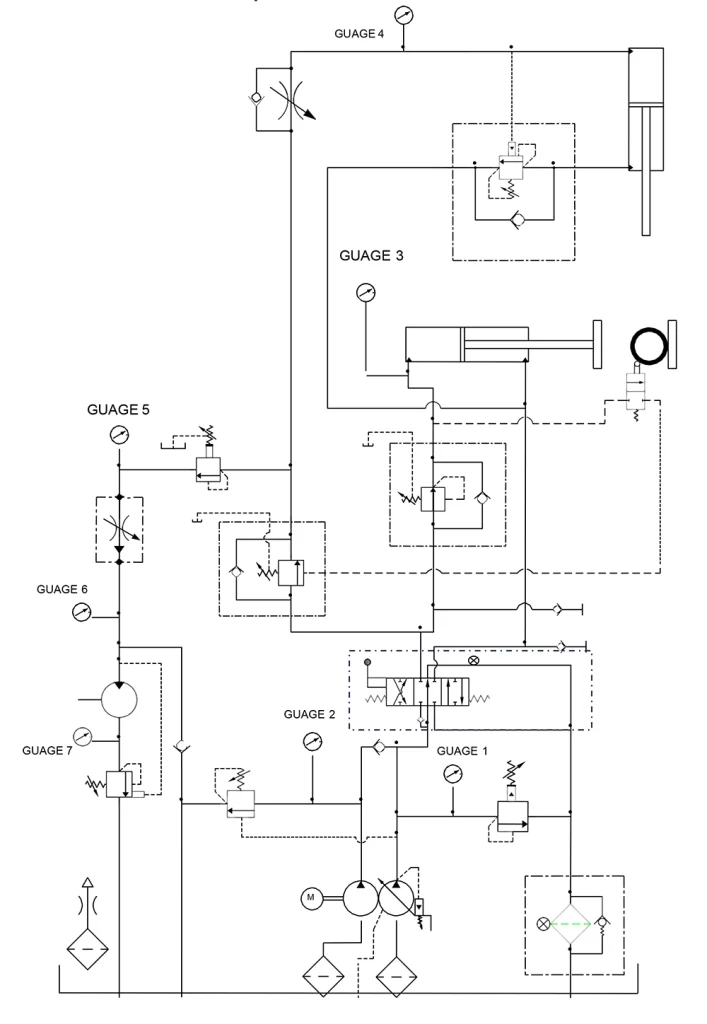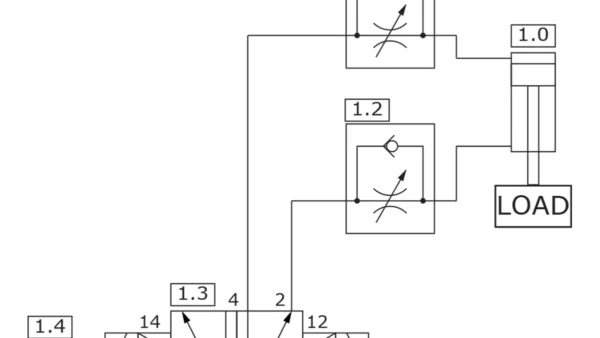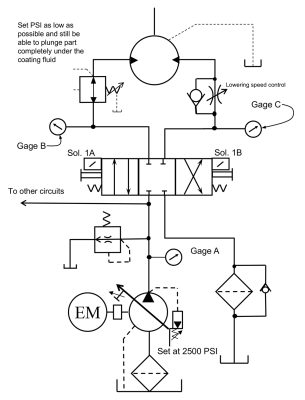Pump Continues To Fail After the Main Directional Valve Was Replaced Weeks Earlier
By Robert Sheaf, CFPAI/AJPP, CFPE, CFPS, CFPECS, CFPMT, CFPMIP, CFPMMH, CFPMIH, CFPMM, CFC Industrial Training.
 A manufacturer had a machine where the hydraulic system would clamp the part first, then extend a cylinder to stamp part numbers on its body. Then an air cylinder would extend a cylinder with a hydraulic motor attached to its rod that would grind a notch in the part. The operator would then reverse the air driven cylinder with the hydraulic motor as well as retract the two hydraulic cylinders and manually remove the casting.
A manufacturer had a machine where the hydraulic system would clamp the part first, then extend a cylinder to stamp part numbers on its body. Then an air cylinder would extend a cylinder with a hydraulic motor attached to its rod that would grind a notch in the part. The operator would then reverse the air driven cylinder with the hydraulic motor as well as retract the two hydraulic cylinders and manually remove the casting.
The manually actuated directional valve was worn out and replaced with a new one that was in their stores room. Several weeks later the piston pump failed, and they replaced it with a new one that only lasted less than 6 weeks. The pump manufacturer denied warranty claiming the cause was due to a lack of lubrication. How could this be when the pumps were located below the tank and the pump had a positive intake set-up?
See Solution
Robert Sheaf has more than 45 years troubleshooting, training, and consulting in the fluid power field. Email rjsheaf@cfc-solar.com or visit his website at www.cfcindustrialtraining.com. Visit fluidpowerjournal.com/figure-it-out to view previous problems.




